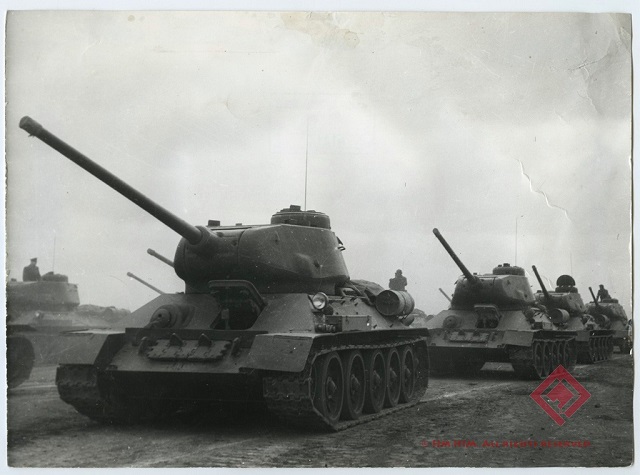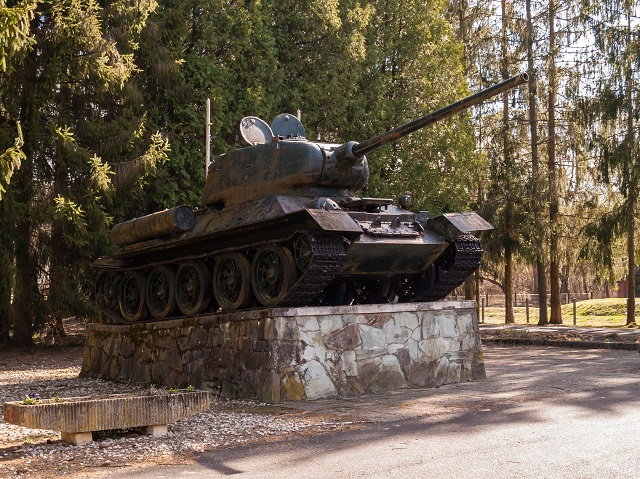The development of the iconic Second World War tank began in 1936 in the Soviet Union according to the plans of J Walter Christie’s American M1928 tank. The new construction, which was based on Christie’s tank design, had some unique features that were quite new compared to other period tanks. These features were the sloped armour, welded body, moulded turret and a diesel engine and due to these innovations, the T-34 became one of the most successful battle tanks of the Second World War.
By the time of the German attack in 1941, the Red Army had almost 1000 pieces of this simply and cost effectively manufactured tanks in its ranks. Although a prototype was made with a 50mm cannon, only the variant with a 76.2mm cannon made it into mass production, to be gradually replaced by a version equipped with an 85mm gun from 1943. Until 1943, T-34-76 tanks could effectively fight against German Panzer IVs but with the appearance of Panzer V ‘Panther’ and Panzer VI ‘Tiger’ tanks in the Battle of Kursk they were rendered obsolete because of the superiority in both firepower and armour protection of their German counterparts. The T-34 equipped with the 85mm gun could overcome the aforementioned German tanks in terms of firepower and armour but its true superiority was manifested in its reliability and because the Soviets could produce much more of these tanks than the Third Reich. The T-34-85 version became the standard issue battle tank of the Red Army by the second half of the Second World War. Almost 85,000 were built of the different versions of the T-34. Its production was continued after the Second World War and it was the main battle tank of the ‘Eastern Block Armies’ during the 1950s. There were several examples of its combat use during the Cold War, like in the Korean War, the Arab-Israeli conflicts, the Hungarian Revolution of 1956, civil wars in Angola and Yugoslavia, and some were even used in Yemen during the Houthi Rebellion in 2015.
Several T-34-85s are preserved in the collection of the MoD Military History Institute and Museum, exhibited in military bases (Tápiószecső, Tata) and also in public places (Hortobágy, Nemesmedves, Nagykanizsa).

Specifications:
Mass: 26.5 tons (29.2 short tons; 26.1 long tons)
Length: 6.68m (21ft 11in)
Width: 3m (9ft 10in)
Height: 2.45m (8ft)
Crew: 4 (T-34) / 5 (T-34-85)
Main armament: 76.2mm (3in) F-34 tank gun
(T-34-85: 85mm ZiS-S-53 or D-5T gun)
Secondary armament: 2×7.62mm (0.3in) DT machine guns
Engine Model V-2-34 38.8 L V12 Diesel engine
500 hp (370 kW)
Operational range:
250–330km (T-34) (250mi)
250–300km (T-34-85) (150mi)
Maximum speed: 53 km/h (33 mph)




